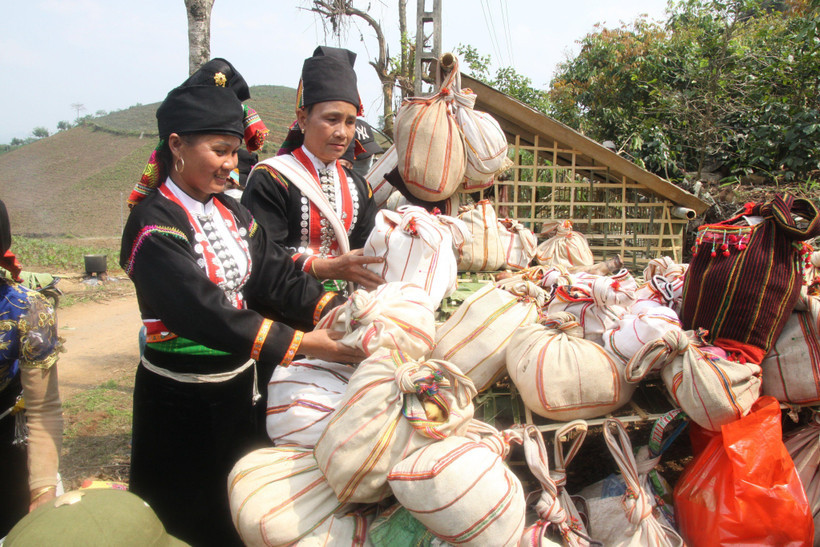Every year in March, the Kho Mu ethnic community celebrates Xen Cung, meaning "village offering," to pray for favorable weather, bountiful harvests, flourishing life, good health, and prosperity for their villages.
Although modern life has brought many changes to Kho Mu culture, Xen Cung remains a deeply rooted and preserved tradition, representing the unique spiritual identity of the Kho Mu people.

Xen Cung has been passed down through generations as a sacred ritual. In the past, the festival spanned two to three days with elaborate procedures.
Today, in keeping with modern customs, it is held in a single day, with fewer rites but the essence and traditional beauty still intact.
The festival is usually conducted after the rice has sprouted to about a handspan in height. At this point, the community chooses a spiritual leader to act as the ceremonial master, representing the villagers in offering prayers to the gods. On the eve of the ceremony, villagers refrain from leaving the village in preparation.
The rituals begin at dawn, as villagers of all ages gather at two highland locations - one at the village entrance and another at the exit.
The higher ground at the entrance serves as the main ceremonial site. A tall bamboo pole is erected and adorned with symbolic items representing fertility and abundance.
A shrine is constructed using bamboo and wooden farming tools. Offerings are placed on a woven tray and include: the head, ribs, legs, heart, and liver of a pig; a boiled rooster; a live duck; beeswax candles; sticky rice; a bowl of rice grains; and family members’ clothing.
The ceremonial master then calls upon various deities who guard the village - Mountain God, River God, Earth God, and Field Guardian - inviting them to accept the offerings and bless the community.
After the main ritual, a portion of the offerings is set aside and brought by a respected villager to a smaller shrine at the far end of the village.
Designated members begin the festive meal with the remaining offerings. The ceremony concludes with a final prayer to the village spirits, reporting that the ritual has been completed.
After the rituals comes a lively celebration filled with joy and community spirit. The Kho Mu people perform traditional dances and participate in folk games.
According to tradition, the more villagers who join the festival, the more prosperous and productive the year ahead will be. Following the festival, the community observes a day of rest, refraining from farming or fieldwork to enjoy the festive atmosphere.
Xen Cung is more than a ritual - it is a vibrant expression of gratitude to ancestors and deities, a reinforcement of cultural identity, and a powerful symbol of community unity.
Through it, the Kho Mu continue to preserve and promote their rich spiritual and cultural heritage.
PV